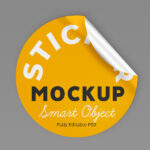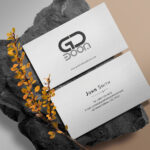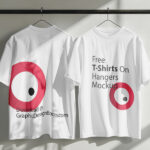The GraphicDesignBoom website stands out as a premier platform for all things related to graphic design. With its user-friendly interface and a plethora of resources, it has earned its reputation as the best in the field.
User-Friendly Interface
Navigating the GDB website is a breeze, thanks to its intuitive design. Whether you’re a seasoned designer or just starting, the site offers easy access to a wealth of information. From insightful articles on the latest design trends to in-depth tutorials on using design software, it caters to designers of all skill levels.
Curated Collection of Design Assets
What truly sets GraphicDesignBoom.com apart is its curated collection of design assets. With an extensive library of high-quality fonts, images, icons, and templates, it serves as a one-stop-shop for designers seeking inspiration and tools to elevate their projects. The site’s commitment to excellence is evident in the careful selection of resources, ensuring that only the best materials are available to users.
Vibrant Community of Designer
GraphicDesignBoom also fosters a vibrant community of designers. The platform provides a space for designers to showcase their work, exchange ideas, and seek feedback from peers. This collaborative atmosphere encourages growth and learning, making it an invaluable hub for both beginners and veterans in the graphic design field.
Treasure Trove of Industry Insights
When it comes to staying informed, GraphicDesignBoom’s blog is a treasure trove of industry insights. From articles discussing emerging design technologies to analyses of groundbreaking design campaigns, the blog keeps designers up-to-date with the latest happenings in the design world.
What is Graphic Design?
Graphic design is a creative and essential field that uses visuals to communicate messages and ideas. It combines art and functionality to create appealing and effective designs. These designs can be found in logos, brochures, websites, ads, and more. The goal is to capture attention and convey information in a visually appealing way.
Graphic design is where art and communication converge.
Key Aspects of Graphic Design
One of the key aspects of graphic design is composition. Designers carefully arrange elements like images, text, and colors to create a balanced and attractive layout. The right balance helps guide the viewer’s eye and ensures the message is clear and understandable. Typography is also important; it’s not just about choosing fonts, but also about picking the right size and spacing to make the text easy to read and engaging.
The Rise of Technology in Graphic Design
Colors are another crucial aspect of graphic design. They can evoke emotions and create a specific mood. Designers use color theory to choose the right colors for each project, depending on the message they want to convey. For example, warm colors like red and yellow can create a sense of excitement, while cool colors like blue and green can bring a feeling of calmness.
Graphic Design in Print Media
With the rise of technology, graphic design has gone digital. Designers now use software like Adobe Creative Suite to create digital illustrations, animations, and user interfaces for websites and apps. Web design is a specialized area that focuses on creating user-friendly and visually appealing online experiences. Graphic design in print media involves creating visual content for physical formats like newspapers, magazines, brochures, and posters. It’s about using design elements to convey messages and information effectively.
Here’s a short description of Print Media Elements:
- Visual Communication: Graphic design in print media uses images, typography, and layout to communicate ideas visually.
- Magazines and Newspapers: Designers create layouts for articles, images, and advertisements in magazines and newspapers.
- Brochures and Flyers: They craft informative and visually appealing brochures and flyers for events, products, or services.
- Posters: Designers create eye-catching posters for various purposes, from advertising to promoting events.
- Typography: Choosing appropriate fonts and arranging text ensures readability and adds to the design’s aesthetic.
- Images and Illustrations: Visual elements like photos and illustrations enhance the content’s impact.
- Layout and Composition: Designers arrange elements to create a balanced and engaging layout.
- Branding: Consistent design elements reinforce a brand’s identity across print materials.
- Color and Mood: Color choices influence the emotional response and mood of the design.
- Tangibility: Print media offers a tactile experience that digital platforms can’t replicate.
- Attention to Detail: Precise alignment, proper margins, and print specifications are crucial for a polished final product.
- Print Techniques: Understanding printing methods helps designers optimize their work for different materials and finishes.
- Audience Consideration: Designs are tailored to the target audience’s preferences and interests.
- Impactful Visuals: Graphic design in print media aims to capture attention and leave a lasting impression.
Collaboration and Communication Skills in Graphic Design
Graphic design is not limited to the digital world; it’s also crucial in print media. Designers work on magazines, posters, and other physical materials. The tactile nature of print allows for unique experiments with textures and paper types, making the design experience more immersive.
Ethics in Graphic Design
Collaboration and communication skills are essential for graphic designers. They often work with teams or clients to understand their needs and target audience. By understanding the message, designers can create designs that effectively reach the intended audience.
The Future of Graphic Design
Ethics in graphic design are gaining importance. Designers aim to promote inclusivity and diversity, avoiding harmful stereotypes in their work. By celebrating different cultures and perspectives, designers create designs that resonate with a diverse audience.
Designing tomorrow through the lens of graphic innovation.
Summary
In summary, graphic design is a powerful and important field that merges art and practicality. Its impact is everywhere, from logos to websites and print materials. By using composition, typography, and color theory, designers create visually appealing and effective designs. As technology advances, graphic design will continue to adapt and shape the way we interact with information and the world around us. It remains a crucial force in the visual landscape, capturing attention, conveying messages, and inspiring creativity.
GaphicDesignBoom stands as the ultimate destination for graphic designers. Its user-friendly interface, extensive design asset library, and thriving community make it a standout choice for both beginners and experienced designers. Whether you’re looking for inspiration, resources, or a place to connect with fellow designers, GraphicDesignBoom has all your design needs covered.








